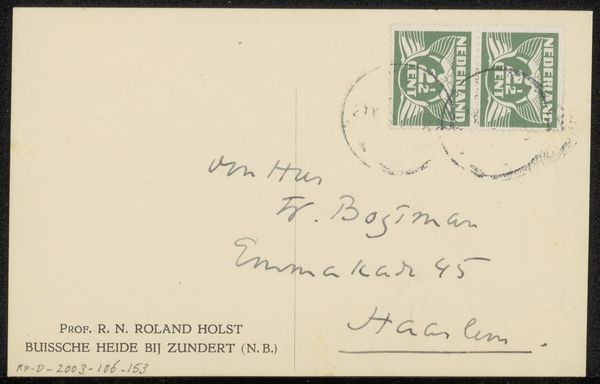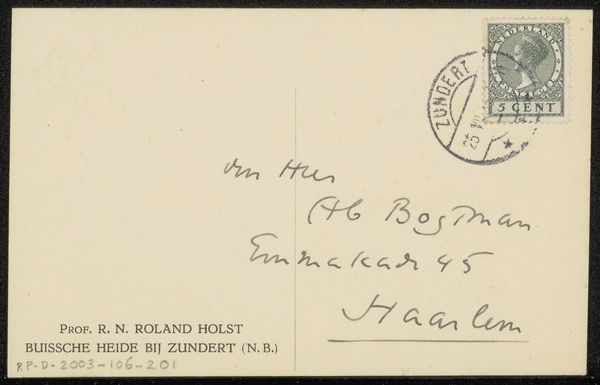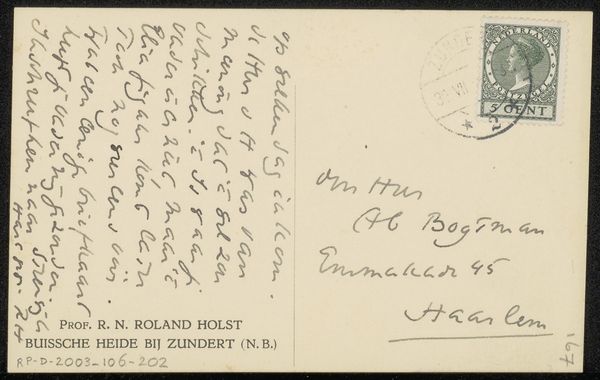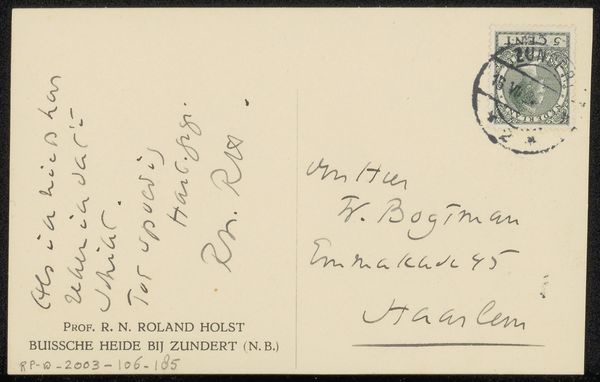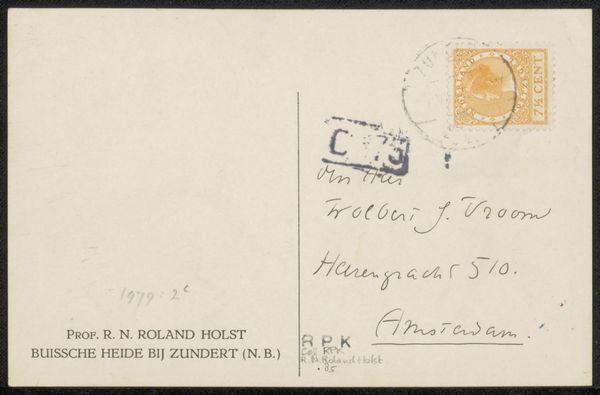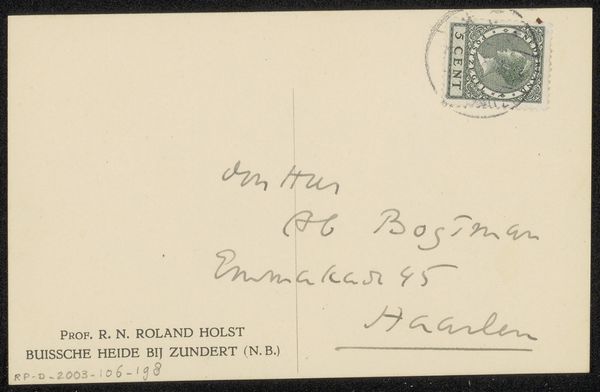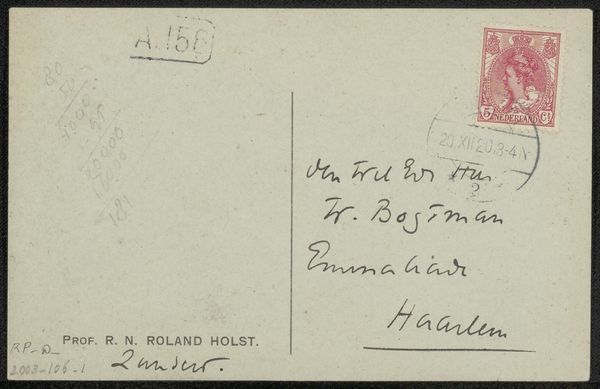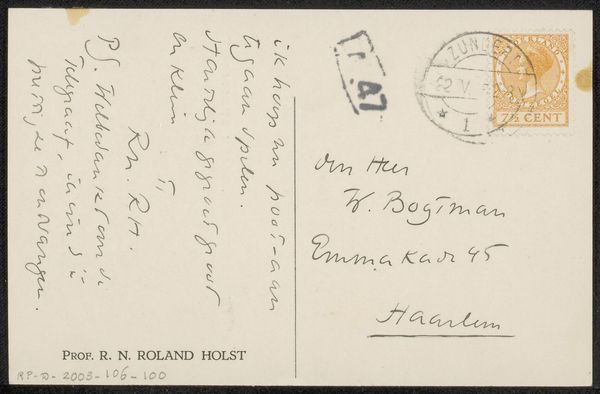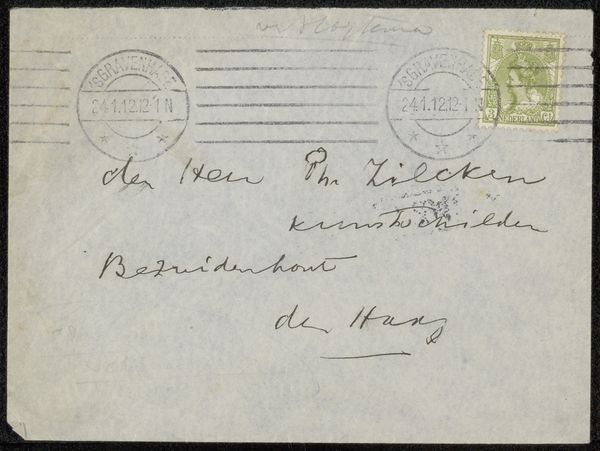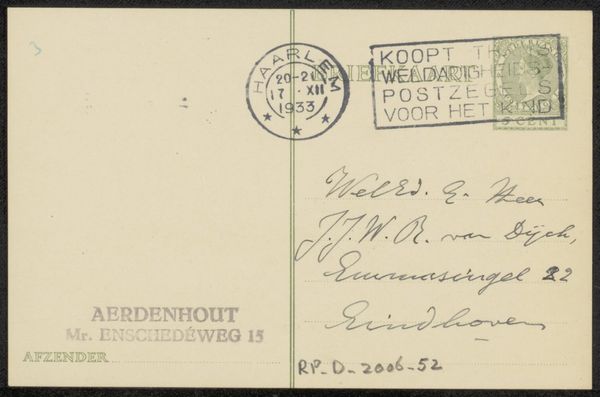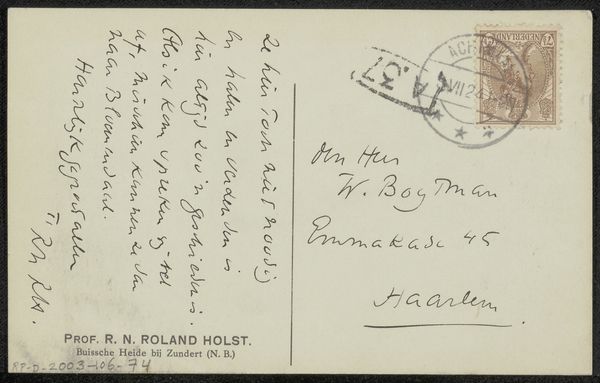
drawing, paper, ink, pen
#
portrait
#
drawing
#
pen illustration
#
hand drawn type
#
paper
#
personal sketchbook
#
ink
#
ink drawing experimentation
#
pen work
#
pen
Copyright: Rijks Museum: Open Domain
Editor: So, this is a postcard titled "Briefkaart aan Willem Bogtman," dating to before 1937, by Richard Nicolaüs Roland Holst. It's an ink drawing on paper. It's interesting to see what seems like a personal communication preserved in a museum context. What can you tell me about its cultural significance as a personal artifact made public? Curator: Precisely. We often see art as grand statements, but here we have something intimate entering the public sphere. This postcard gives us a peek into the artistic networks of the time. Roland Holst was a prominent figure. The recipient, Willem Bogtman, was presumably an artist or someone involved in the arts. What do you make of the address written so plainly on the card? Editor: Well, it makes it seem almost mundane. A personal message amidst the grand collection! It feels… unexpected. Do you think this subverts the normal purpose of what "art" should be, or should represent? Curator: It challenges that notion, definitely. Museums, galleries, the art world itself, often elevate certain objects while neglecting everyday expressions. This postcard blurs those boundaries. Think about the postal service as a conduit for not just messages, but potentially subversive ideas, too. Even something as small as this can be political, questioning what deserves preservation and what gets discarded. The "high" and "low" become less distinct, and the socio-political hierarchy that museums traditionally reinforce can become porous. Editor: That’s fascinating. I hadn't considered the postal service and the act of communication itself as part of the art’s significance. This makes me think differently about what's included in a museum's collection and *why*. Curator: Indeed! Looking closer at such art prompts to question the very foundations upon which our aesthetic preferences and institutional practices rest. Museums have enormous responsibility in shaping the narratives they choose to endorse and portray. It's so great to see an artist challenging the canon of what art should portray.
Comments
No comments
Be the first to comment and join the conversation on the ultimate creative platform.
